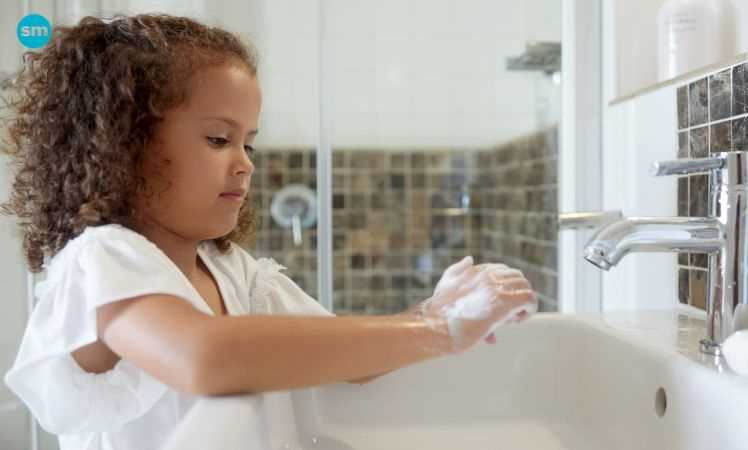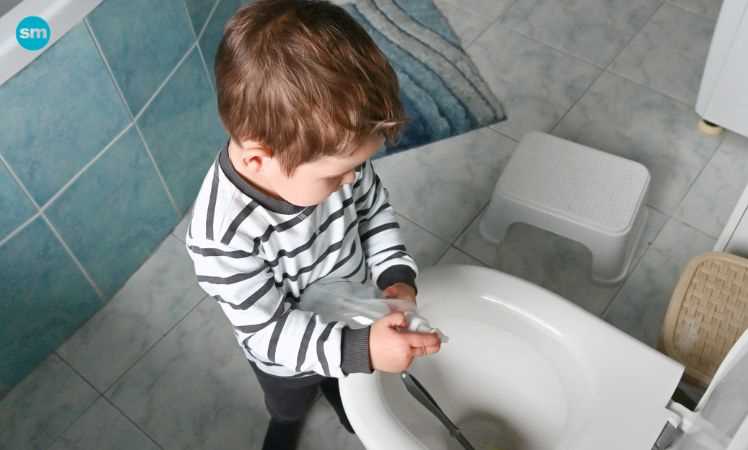Last Updated on August 30, 2023 by Lori Pace
Childproofing plumbing can seem overwhelming to a new mom or one on her own. It’s two-fold: keeping your kids safe and preventing child-caused damage to plumbing. Kids are practically fearless, sometimes clumsy, often careless, and always predictably curious!
Moms don’t have eyes behind their heads or multiple arms so it’s not too far-fetched that a tyke can turn on a tap and get scalded. Research shows that scalds, mostly from running water in baths, are the most common cause of burns in pediatric patients.
What a horrifying thought – second only to the possibility of nearly drowning in the tub! In times like these, you need help with your home plumbing; and it’s even better if you know that professional, same-day service is always available.
If you are buying a house or thinking of renovating one for safety, there are several ways you can protect your child and home.
1. Fix leaks and drips
Ensure that there are no leaky pipes or dripping kitchen and bathroom faucets that need replacement because slips and falls from the trickles can happen when those tiny feet get going. As children grow, teach them about the dangers of playing with faucets, the importance of not overfilling the sink or bathtub, and the hazards of slipping on wet surfaces.
After mopping off the excess moisture and turning off the supply valve, call the plumber if you don’t have the tools or the skills to fix the leak.
2. Keep outlets and water faucets or showers at a standard distance from each other.
Prevent serious accidents by ensuring that the electrical outlets and any faucet, shower, or bidet, are a standard distance away.
3. Keep the toilet seat cover down
Make sure you drain the bathtub completely after using it and keep the toilet cover down, especially if you have toddlers.
4. Set heaters on safe settings
Even if your child knows what cold and hot water are, follow the recommendation of the Consumer Product Safety Commission (CPSC) and lower the heater setting to 120°F (48.9°C). This should be able to prevent accidental scalds from any bathtub, sink, or shower faucet. If there are any anti-scald devices for faucets use them.
Young children should not be left by themselves unsupervised in the bathroom or the kitchen. Hot temperature should never be taken for granted since it’s not just the water that can hurt, but the fixtures can get too hot to handle too.
5. Flush correctly.
Make sure your child knows what can be flushed and what should go to the trash bin. Children can get fascinated with flushing and might throw in toys that can’t go through the narrow pipes. Flushing repeatedly will cause water to eventually overflow. A clogged pipe of this nature won’t be a DIY project, so prevention is best!
6. Invest in stoppers and strainers.
Inexpensive items that could save you a lot of money are drain stoppers and strainers. These catch items that children might drop into sinks or tubs, preventing potential clogs.
7. Create safe play zones.
When kids play outside, make sure garden hoses and external faucets are turned off and that there are no puddles from leaks that children might slip on. Store any buckets upside down to prevent collecting water, which is a drowning risk.
8. Install Floor Drains
In areas where water might collect (like basements or laundry rooms), consider installing a floor drain. This can prevent water buildup, which is both a slip hazard and a potential breeding ground for mold.
9. Secure Heavy Appliances
Ensure that heavy appliances connected to your plumbing, such as dishwashers or washing machines, are securely anchored to prevent them from tipping over should a child attempt to climb on them.
10. Safety Latches & Locks
Toilet Locks
Curious toddlers are known to throw toys, paper, and other foreign objects into toilets, which can lead to blockages or even damage. Consider installing a toilet lock to keep the lid down when not in use.
Cabinet Locks
Household cleaners and detergents are usually stored under sinks. Install safety latches or locks on cabinets to ensure children cannot access these toxic products.
Children learn by observing. Always demonstrate safe behavior around all plumbing fixtures, so they understand the importance of being cautious and respectful.
Final Thoughts:
Childproofing your plumbing might seem overwhelming at first, but with a little time and effort, you can create a safe environment for your little ones. Always stay updated on the latest safety recommendations, adjust your home environment as your child grows and explores, and call expert plumbers who can do it right if the task is above your skill level.


